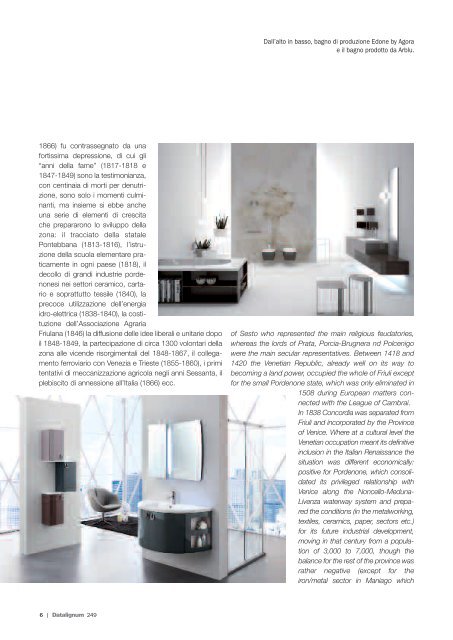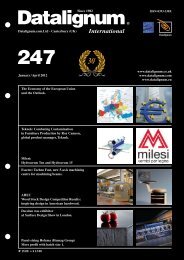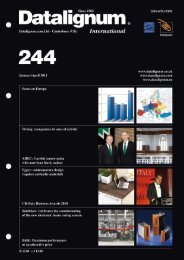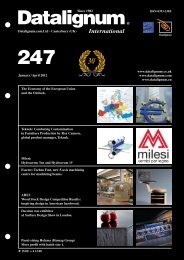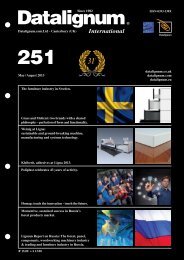Datalignum n° 249 - Settembre/Dicembre 2012 - Datalignum.com
Datalignum n° 249 - Settembre/Dicembre 2012 - Datalignum.com
Datalignum n° 249 - Settembre/Dicembre 2012 - Datalignum.com
- TAGS
- datalignum
- datalignum.com
You also want an ePaper? Increase the reach of your titles
YUMPU automatically turns print PDFs into web optimized ePapers that Google loves.
1866) fu contrassegnato da una<br />
fortissima depressione, di cui gli<br />
“anni della fame” (1817-1818 e<br />
1847-1849) sono la testimonianza,<br />
con centinaia di morti per denutrizione,<br />
sono solo i momenti culminanti,<br />
ma insieme si ebbe anche<br />
una serie di elementi di crescita<br />
che prepararono lo sviluppo della<br />
zona: il tracciato della statale<br />
Pontebbana (1813-1816), l’istruzione<br />
della scuola elementare praticamente<br />
in ogni paese (1818), il<br />
decollo di grandi industrie pordenonesi<br />
nei settori ceramico, cartario<br />
e soprattutto tessile (1840), la<br />
precoce utilizzazione dell’energia<br />
idro-elettrica (1838-1840), la costituzione<br />
dell’Associazione Agraria<br />
Friulana (1846) la diffusione delle idee liberali e unitarie dopo<br />
il 1848-1849, la partecipazione di circa 1300 volontari della<br />
zona alle vicende risorgimentali del 1848-1867, il collegamento<br />
ferroviario con Venezia e Trieste (1855-1860), i primi<br />
tentativi di meccanizzazione agricola negli anni Sessanta, il<br />
plebiscito di annessione all’Italia (1866) ecc.<br />
6 | <strong>Datalignum</strong> <strong>249</strong><br />
Dall’alto in basso, bagno di produzione Edone by Agora<br />
e il bagno prodotto da Arblu.<br />
of Sesto who represented the main religious feudatories,<br />
whereas the lords of Prata, Porcia-Brugnera nd Polcenigo<br />
were the main secular representatives. Between 1418 and<br />
1420 the Venetian Republic, already well on its way to<br />
be<strong>com</strong>ing a land power, occupied the whole of Friuli except<br />
for the small Pordenone state, which was only eliminated in<br />
1508 during European matters connected<br />
with the League of Cambrai.<br />
In 1838 Concordia was separated from<br />
Friuli and incorporated by the Province<br />
of Venice. Where at a cultural level the<br />
Venetian occupation meant its definitive<br />
inclusion in the Italian Renaissance the<br />
situation was different economically:<br />
positive for Pordenone, which consolidated<br />
its privileged relationship with<br />
Venice along the Noncello-Meduna-<br />
Livenza waterway system and prepared<br />
the conditions (in the metalworking,<br />
textiles, ceramics, paper, sectors etc.)<br />
for its future industrial development,<br />
moving in that century from a population<br />
of 3,000 to 7,000, though the<br />
balance for the rest of the province was<br />
rather negative (except for the<br />
iron/metal sector in Maniago which


